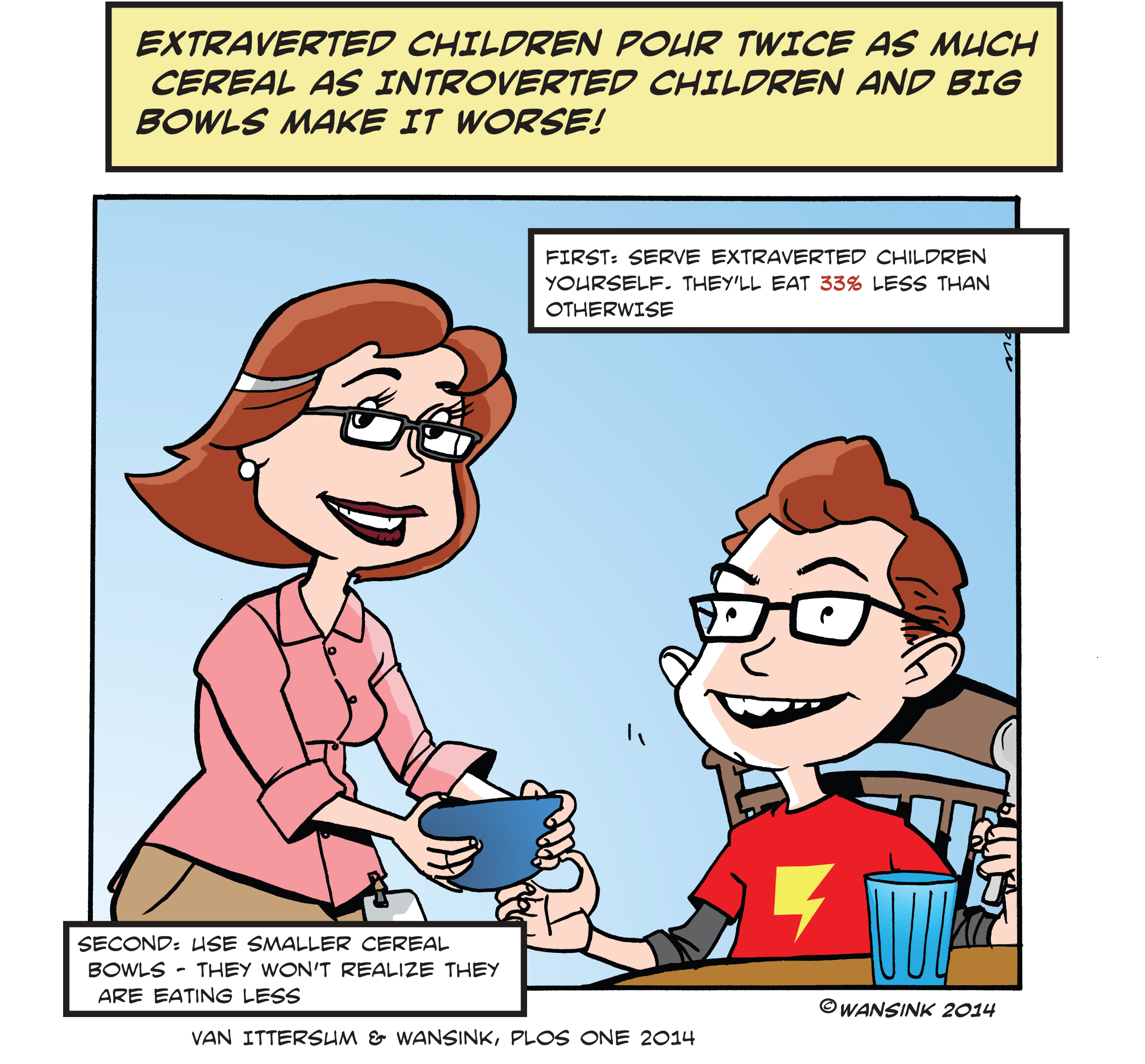
As a parent, it may come as no surprise that your child’s personality affects how he or she interact with his or her environment. For example, Chloe is outgoing and enjoys acting in plays– she exhibits personality traits associated with extraversion and interacts with other children and her surrounds readily. Consider her best friend Lee—he is more reserved and enjoys watching Chloe act, but does not find the idea of being on stage appealing. Writing a play is more his style. He interacts less with the people and things around him and spends more time thinking; these are traits associated with introversion. A study by Cornell University’s Food and Brand Lab found that extraverted children, like Chloe, who tend to engage more with their surroundings are more likely to be influenced by environmental cues such as bowl size when serving themselves food than introverts like Lee are.
Environmental cues are sensory elements that surround us and can influence our actions. One environmental cue is the size of dishware. Larger bowls and plates can trick us into serving ourselves more food than we actually want. This is particularly true for extraverted children, according to this two-day study. A group of children, 6-12 years old, were evaluated by their teachers and counselors and categorized as either an extravert or an introvert. On the first day of the study, all children were given large bowls, and adult servers poured cereal into the bowls until the children indicated that they were satisfied with the amount in their bowl. The next day, the children were assigned either a small or large bowl. This time they were asked to serve themselves. What the researchers found was that those children who were categorized as extraverts and had large bowls served themselves 33% more cereal than when an adult served them. On the other hand, introverted children did not show a significant change.
Much of the research conducted at the Food and Brand Lab investigates how these environmental cues impact consumption and therefore weight gain or weight loss. Their research helps to show how the environment can be manipulated in a way so that the cues lead individuals to eat more healthfully. With increasing concerns about childhood obesity, these types of findings are essential to understanding how to design and maintain a healthy food environment for your children.
Take away tip: Make sure to give children bowls that hold the proper serving size – they will be less likely to over serve themselves whether introverted or extroverted.
Contributor
Katherine Baildon, Cornell Center for Behavioral Economics in Child Nutrition Programs
Source
van Ittersum K, Wansink B (2013) Extraverted Children Are More Biased by Bowl Sizes than Introverts. PLoS ONE 8(10): e78224. http://foodpsychology.cornell.edu/op/extravert-intravert
